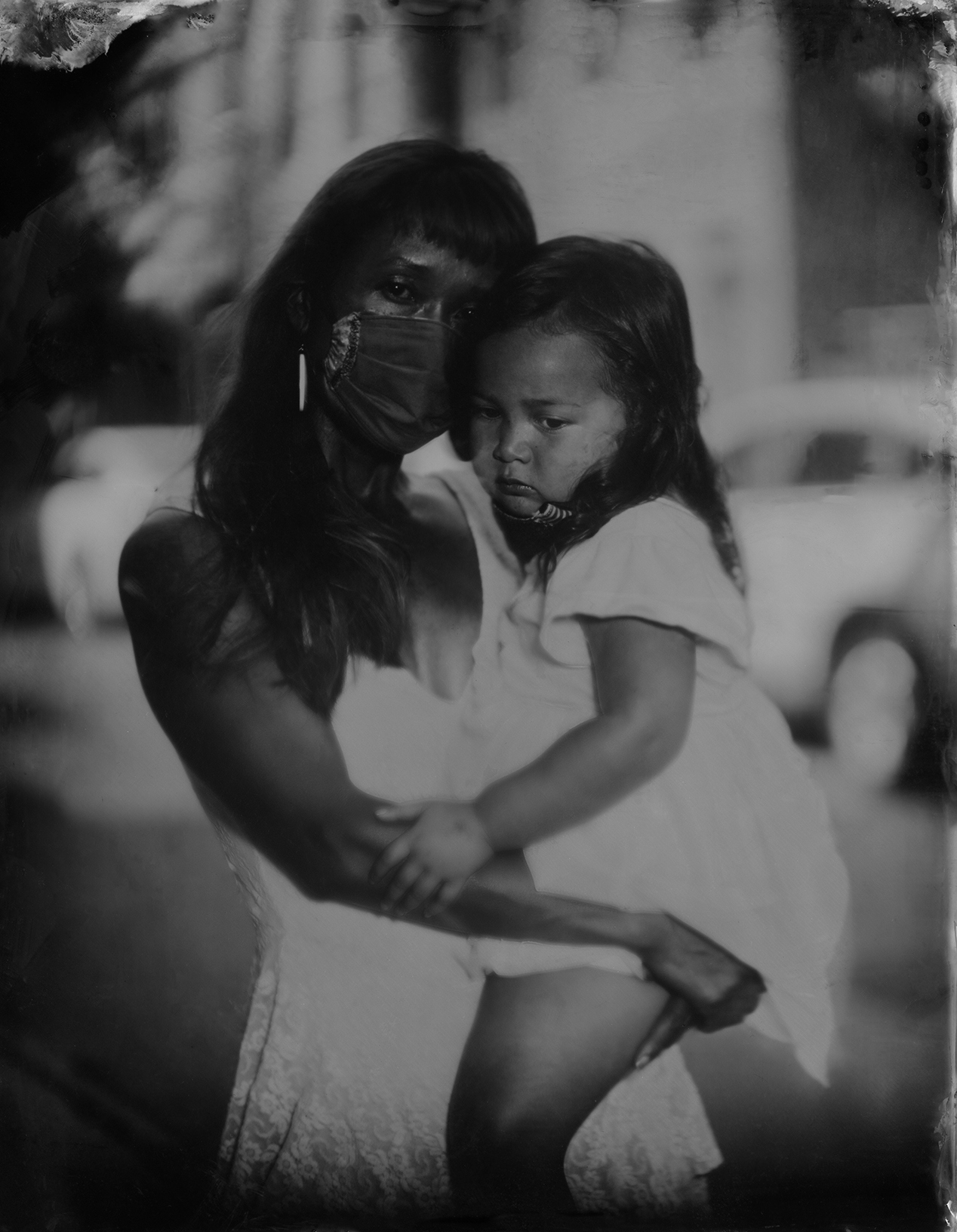Awardee: Helen Maurene Cooper – Other – Round 2
Impact Statement:
My current tools are the large format 8×10 camera, and the wet plate collodion process; the East Kensington community is my subject, my studio, and my collaborator. These portraits challenge the historical notion of East Kensington as a white working-class community by depicting a racially diverse, queer and heteronormative neighborhood. I am reframing a history of place and challenging a racist, sexist, homophobic, and transphobic past.
From my front stoop, I search for those demonstrating care and affection in public. In a time of collective grief, I choose to create space for expression and build community. The camera and the photograph are the pretext to observe shared human experiences. They are my conduit for connection. I contextualize my tools, the 8×10 camera and the wet plate process as the ultimate 21st-century tools in participatory practice. Both are novel and demand from the sitter a time commitment and focused engagement in the image-making process. Typically, I hold two to three portrait sessions with a family and gift them one of the physical glass plates at the end of each shoot.
Over the last 14 months, I have built a body of photographs that engages my neighbors as stakeholders. In the first 6 months of this project the work was engaged with anyone living in the community and was titled People of the Pandemic. But with pressures of the pandemic and calls for collective for racial justice, I began to reframe the work now called, The Caregivers. The Caregivers comes from my lived experience as a partner, mother, and daughter. For months, the New York Times has been following several women as case studies, reporting on the continued imbalance of domestic labor within marriages and how these pressures have impacted the emotional, physical and physiological well-being of American women. I see my experience reflected in the diverse families in my neighborhood and I am interested in how this dynamic plays out in other households. I am continually invested in making visible unseen domestic labor and the emotional, physical, and physiological effects within a range of families across economic, racial, and gender spectrums.
When I first applied for funding through ART is PHL, I had the goal of projecting scanned versions of the images throughout the neighborhood. At the time, I had no sense of the exorbitant cost associated with purchasing and renting projects. Instead the grant money from Round 1 has been rolled back into the project to cover the cost of chemistry and glass which has totaled $4k in the last 14 months. The next level of funding for this project would allow me to continue to produce images, revisiting families I have worked with for a second year and continuing to build new relationships for image making. However, the third level of funding would enable me to reach the goal of producing a public viewing of these images projected throughout the neighborhood as well as pricing a limited-edition artist book of the Caregivers (which is a historical document).




